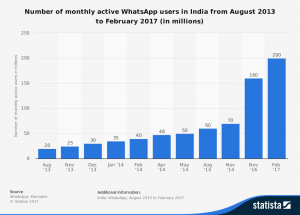A few weeks ago, a librarian colleague and I discussed how critical and analytical thinking can be taught during their library classes. We discussed the importance of media literacy, and this led to this post…
In today’s era, media literacy is an indispensable skill that is essential in our daily lives. With a plethora of information available at our fingertips, it is crucial to discern between what is true, what is not, and what is outright false. This task becomes even more crucial for teenagers and adults, who form a significant portion of the online population. Therefore, it is important to understand the importance of media literacy and to explore the differences between advertisements, propaganda, and public service announcements (PSAs). In addition, we will look at some examples to illustrate these points and discuss how educators and librarians can impart media literacy. Here is a presentation that you might want to use with your students.
What is Media Literacy?
Media literacy is the ability to access, analyze, evaluate, and create media in a variety of forms. It is a critical skill in the digital age that enables individuals to decode the complex messages presented on various media platforms. By fostering media literacy, we empower individuals to become responsible media consumers, capable of recognizing biases, identifying underlying messages, and making informed decisions.
The distinction between advertisements, propaganda, and PSAs is fundamental in understanding media literacy.
What are advertisements?
It is essential to understand that advertisements are designed to persuade an audience to purchase a product or service. For example, a Tata Sky or Netflix services. Products like the Nivea Soap, Fair and Lovely, and Toothpaste ads. These tell the audience to buy a product or a service. These are usually commercial in nature.
What is Propaganda?
Propaganda seeks to promote a particular political cause or viewpoint. Unlike advertisements, which are primarily commercial, propaganda aims at shaping public opinion and behaviour towards a specific ideology. During election seasons in India, it’s common to see political parties employing propaganda through social media platforms, billboards, and television commercials to sway voters.
What are Public Service Announcements (PSA)?
Public Service Announcements (PSAs) differ significantly from advertisements and propaganda. PSAs are intended to educate the public about pressing social issues and encourage positive societal changes. They are usually sponsored by government agencies or non-profit organizations and focus on topics such as health, safety, and environmental conservation. A notable Indian example would be the government’s campaign to promote cleanliness and hygiene under the Swachh Bharat Abhiyan (Clean India Mission), and Protection from Covid -19, these utilized various media forms to spread its message.
Techniques used in creating these messages:
These messges rely on various techniques, such as emotional appeal, celebrity endorsements, and catchy slogans, to influence consumer behaviour. For example, a popular beverage company in India might launch a campaign featuring a Bollywood star, using their influence to attract customers.
The techniques used in these messages vary widely but often include appealing to emotions, using influential figures, and presenting facts or statistics to support their claims. Recognizing these techniques is a key component of media literacy, allowing individuals to critically evaluate the content they consume.
Some techniques are:
- Bandwagon
- Language to evoke emotions
- Repetition of certain points
- Testimonial
- Fear
- Selective storytelling or cherry-picking facts (all facts not shared) to tell the story
- Glittering generalities using vague language
- Transfer, associating the authority or power of an individual to convey a message.
Teaching media literacy to teenagers and adults is essential in today’s information-saturated world. Librarians and educators play a crucial role in this endeavour. They can introduce media literacy through curated lessons that include analyzing different media forms, discussing the purpose behind various messages, and encouraging critical thinking about the content’s credibility and bias.
Additionally, incorporating media literacy into the curriculum can be highly effective. This could involve case studies of advertisements, propaganda, and PSAs from the Indian context, allowing students to explore real-world examples and engage in meaningful discussions about their implications.
By understanding the nuances between advertisements, propaganda, and PSAs, and by being aware of the techniques used in these messages, individuals can become more informed consumers and producers of media. Librarians and educators play a significant role in fostering this literacy, equipping teenagers and adults with the critical thinking skills to discern truth from falsehood. Together, we can cultivate a society that values truth, encourages informed decision-making, and promotes a healthy, democratic discourse.





